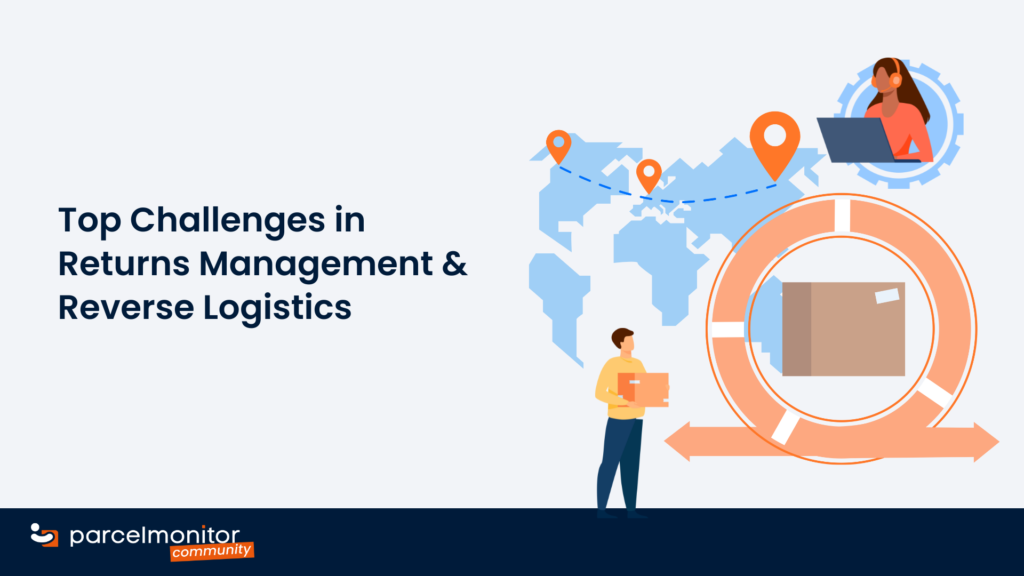In today’s dynamic logistics and retail landscape, proficient handling of product returns and effective management of reverse logistics have become vital for businesses worldwide. Whether operating in traditional brick-and-mortar retail or the online shopping realm, retailers and logistics professionals encounter various obstacles and challenges in dealing with reverse logistics.
Parcel Monitor recently examined some of the significant issues that companies face while managing reverse logistics and returns. Understanding and addressing these challenges will enable businesses to streamline their returns processes, enhance customer experiences, and ultimately achieve operational success.
#1 – Inadequate reverse supply chain infrastructure
One of the major challenges in reverse logistics is the lack of adequate infrastructure in the reverse supply chain. For instance, many companies lack dedicated spaces for processing and storing returned products. This scarcity of storage capacity often leads to the need to cram large volumes of returned items into limited areas, resulting in overcrowded warehouses. Consequently, arranging products efficiently becomes a daunting task, causing delays and inefficiencies in the returns processing.
The issue of inadequate infrastructure is particularly evident during peak season periods, such as Black Friday, Cyber Monday and Easter sales, when the volume of returned goods significantly increases. Unfortunately, due to infrastructure limitations, many organizations struggle to handle these surges effectively, leading to difficulties in managing the increased workload and processing returns within required timeframes.
Moreover, specific handling and storage facilities are essential for certain types of returned goods, especially sensitive or potentially hazardous items. However, not all companies have the necessary infrastructure to handle such products appropriately. This presents additional hurdles in complying with regulations, ensuring safety and minimizing potential risks associated with these particular product categories.
#2 – Complex product returns policies
Next, many businesses establish return policies outlining specific requirements for product returns, such as deadlines, condition criteria and necessary documentation. However, some companies struggle to effectively communicate relevant information to their clients, leading to confusion and hesitation among customers regarding the return process.
A common issue is the existence of different return procedures for various product categories. This complexity adds confusion for customers who may not be aware of the precise rules governing each item they wish to return. Unclear and restrictive return policies not only frustrate customers but also hinder the efficiency of returns logistics. The intricacy involved may discourage customers from initiating returns, potentially leading to dissatisfaction and negative experiences. Moreover, the lengthy procedures and demands can cause delays in processing returns, impacting customer retention and satisfaction.
#3 – Lack of customer-focused solutions
When it comes to return policies, transparency is essential. Customers have a right to full disclosure of all information, including any fees or requirements for return eligibility. Customers may feel duped or misled when organizations fail to give this information. Additionally, it’s crucial to update consumers on the status of their application once they’ve submitted a return request. When clients are promptly informed when their return is accepted, expectations are better managed and their whole experience is improved.
Additionally, gathering and using feedback from customers is crucial for enhancing reverse logistics procedures. Businesses should set up channels for customers to communicate their problems, ideas, or displeasure over their returns experience. Businesses may pinpoint client pain areas, swiftly resolve problems and create customer-focused products by actively listening to customer opinions.
#4 – Returns fraud and abuse
Returns fraud and abuse refer to the utilization of a company’s returns policy for one’s own financial advantage through fraudulent methods. These dishonest practices cover a range of methods designed to trick returns policies, practices or systems in order to fraudulently acquire refunds, replacements or shop credits.
False assertions of authenticity, modifying product packaging, replacing genuine things with counterfeit ones, and making use of online marketplaces are just a few of the deceptive methods used to return fake goods. When trying to distinguish between real and fake returns, these acts pose substantial obstacles for firms. And goods that have been used or even damaged are occasionally falsely returned, too.
In addition, dishonest customers may take unfair advantage of returns rules. In the fashion industry, for example, “wardrobing” is a common practice when buyers buy clothing, wear it once for a certain occasion or photoshoot, and then return it while making up a bogus complaint about their discontent. Fake receipts can also be used to support returns and make misleading claims about purchases. Some clients practice “product swapping,” exchanging inferior goods for superior ones by returning the inferior goods in place of the original, superior product.
Retailers suffer a variety of negative effects as a result of this illegal activity. The National Retail Federation estimates that merchants lose between US$9.1bn and US$15.9bn annually as a result of customers abusing their return processes. Establishing clear rules for accepting returns is essential to protecting your company from this threat. Implementing a non-acceptance policy for opened or tampered products and restricting returns to items that can be quickly resold, for instance, can assist prevent fraudulent returns.
To read the full article, click here.


